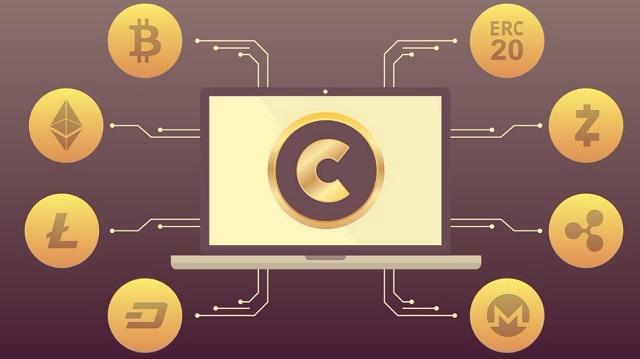A lot has changed since the crypto market cap breached the mark of $3 trillion in 2021. While leading businesses like Microsoft and Starbucks have started Bitcoin, aspiring entrepreneurs have benefited the most due to the rise of cryptocurrencies. Cryptocurrency has provided a platform for new businesses to bloom. Hedge funds and retail investors are jumping on the crypto bandwagon to make the most of the booming economy. The rising adoption of cryptocurrencies has a lot to do with the increasing use cases of blockchain. Blockchain startups received a whopping $25.2 billion in funding from venture capitalists in 2021 alone. This marked a 713% increase from $3.1 billion in 2020.
As more and more projects continue to emerge on the cryptocurrency bandwagon, it is important to develop a deep understanding of tokenomics to sustain in the long run. Tokenomics is the understanding of the supply and demand characteristics of cryptocurrency. Tokenomics is a combination of two words- token and economy.
The two key phases in tokenomics
Road to IDO: Initial Dex Offering (IDO) is a decentralized and permissionless funding platform that has opened a new way of fundraising in the crypto space. Factors like token allocation, token price, selling strategy, vesting schedule and token supply are decided in this phase.
Treasury Management: Treasury management is the phase where you work on token utility, in addition to incentivizing contributors. The incentives are generally given in the form of protocol tokens.
Lethal Tokenomics Mistakes
There are several factors that can have a direct impact on a project’s tokenomics. As the global crypto space continues to grow steadily with emerging startups, it is important to avoid these tokenomics mistakes for your businesses to sustain in the long run.
Unclear Token Utility: Token utility is one of the major factors driving token prices. Users go for tokens with real-world utilities. Unclear token utility leads to anxiety among users, resulting in significant price volatility. Further, with more and more crypto startups emerging globally, investors are getting pickier, going for real-world use cases and token utility. Businesses need to focus on smart business models and tokenomics to grow steadily. Utility tokens give users access to a future product or service. Here are some of the functions a protocol’s token should have:
- Accessing product features
- Voting rights/ Decision-making rights
- Rewarding contributors
- Profit distribution
- Security
- Discount

Source: https://polygant.net/blog/key-principles-of-utility-tokens/
Low Initial Supply: A lot of projects commit the mistake of launching with too low an initial supply. Businesses generally do this to create the hype with a high market capitalization. While this strategy might have a positive impact on the price in the short run, it eventually results in a rapid price fall. Once the FOMO created due to the artificially low supply wears out, a high emissions-to-initial-supply ratio results in more than 100% yearly inflation. Artificially low supply and aggressive emissions often lead to price freefall, denting the project’s brand value significantly.

Source: https://bitcoinist.com/how-escrow-platforms-can-create-real-demand-and-reduce-token-supply/
Liquidity Mining: Protocols have been using liquidity marketing aggressively for rewarding/incentivizing contributors. Protocols give out governance tokens in large amounts as liquidity mining rewards. These rewards are to incentivize participants to supply cryptocurrencies into liquidity pools. Liquidity mining could be a tempting way to establish a strong network. Several protocols have witnessed significant TVL gains with liquidity mining.

Source: https://blog.switchere.com/liquidity-mining-what-are-the-key-pros-cons/
However, liquidity mining leads to a collapse in token prices. Liquidity mining attracts participants interested in short-term yields over long-term results. A network of participants chasing short-term yields often results in massive selling pressure, with participants selling tokens after farming them. The utility of liquidity mining is limited to attracting mercenary farmers. Trends suggest that liquidity mining is dead.
Dragonfly Capital’s Haseeb Qureshi refers to liquidity mining as “malinvestment”. The two major downsides of liquidity mining are huge selling pressure and lower APYs. Once the token price starts to fall, the APYs become low automatically since rewards are denominated in the token. Also, the effect of liquidity mining continues to increase with the increase in TVL (Total Value Locked). While ruling out the benefits of liquidity mining entirely is unadvisable, it must be used judiciously.
“I think liquidity mining is one of the dumbest things happening right now in crypto. Why? Because, for me, there is absolutely no strategic thinking behind it. You should start from thinking, ‘What do we want out of this? What’s some kind of target liquidity we want in our protocol?’ And once you reach it, there should be no further rewards,” says Deribit Insights researcher Hasu.
Final Word
Tokenomics is one of the major factors investors consider while judging the potential of a project. Tokenomics allow projects to prevent bad actors, create trust and build a strong, long-term ecosystem. Strong tokenomics is vital to supporting token price in the long term. Three of the biggest mistakes that projects make with respect to tokenomics are unclear token utility, launching with too little supply, and inflating the supply with liquidity mining. Businesses must be wary of these three mistakes to avoid a sudden dump in token price.

